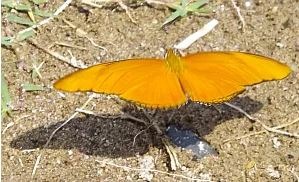Source: Tim Laffel’s Cheapest Destinations Blog
Most people have a pretty clear vision in their mind of what Mexico is like, despite this being a very large country that stretches from the Atlantic to the Pacific and would take days to drive across. There’s a much wider diversity of climates and altitudes than people expect. I just spent some time in the Sierra Gorda Biosphere Reserve, where cloudforests, jungles, deserts, and mountains covered with pine trees are all in one area. Because of this biodiversity, a group of crusaders spent 10 years petitioning the government to make the area a protected reserve and it’s now the largest one in Mexico, as of now. Sierra Gorda Ecotours is part of the alliance that made that happen and oversees the 334,000 kilometers protected region. So if you book a tour with them, you’re doing some good at the same time. You help support anti-poaching efforts, sustainable farming, environmental education, and job creation in remote areas without many other options. Have some fun, support a good cause. I only had a long school break weekend to take my family and explore with them, but I drove through it another time when heading to Las Pozas in Xilitla. That alone is a treat—one of the most scenic drives in the country—but I always regretted that we were just passing through. This time we met up with a guide in the Pinal de Amoles town that’s surrounded by evergreen trees and headed to Chuveje Waterfall in a green, lush forest. It looked like something you’d typically find much further north, with conifers, lichens, and moss. It’s a far cry from the cacti-covered desert you can find just an hour away. On the way north we stopped at the company headquarters in Jalpan and saw a slideshow of photos taken by a National Geographic photographer who is one of the staffers. He explained that there’s a 3,000 meter change in elevation throughout this region, going from tropical hot lowlands to snowy peaks. With 331 species of birds in the area, 1/3 of all the butterflies found in Mexico, and a wide variety of bigger animals, he has plenty to shoot. He’s captured jaguars, pumas, ocelots, snakes, and pygmy owls, and plenty more. I didn’t stake out a spot to wait for that kind of shot, but this guy crossed a trail in front of us: In the cloudforest above La Trinidad village we saw a lot of birds, butterflies, lizards, millipedes, and that rattlesnake. Bromelias with pink flowers hang from moss-covered trees and orchids pop out from the trees and ground. The end of a tough hike brought us to a dramatic canyon with panoramic views. At night we slept in a cabin built by local villagers to host visitors and ate in the smoky kitchen of a mother of six. She patted tortillas by hand as little chicks ran around pecking for food. The one light was powered by a battery charged by a solar panel each day. This is a trippy village with giant limestone boulders sticking out of the ground, with sheep keeping the grass trimmed and the men of the village keeping the trails cleared and the streams tamed for rainy season. After spending a night at some eco-cabins made from straw bale construction and glass bottles, we also explored a lowland area near Conca where two different rivers flow together. One of them is clear blue and really cold, the other green and warm. Swimming in the current was fun, but my daughter enjoyed playing with tadpoles and there were hundreds of butterflies flitting around, with multiple colors. I’ll be writing a more in-depth story on this area in Perceptive Travel later, but for now check out the Sierra Gorda Eco-Tours site if you’ll be anywhere near Queretaro or the Huasteca region of San Luis Potosi state. They’re good people doing a lot of good.


